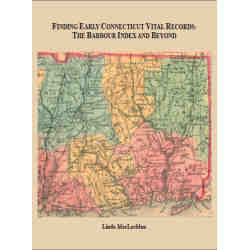Description
“Death Seem’d to Stare” marks Joseph Lee Boyle’s third book honoring the identities of the heroes of the six-month encampment at Valley Forge in 1777-1778. His previous volumes, “Fire Cake and Water” and “What Can’t Brave Americans Endure?” identify the Connecticut and New Jersey soldiers, respectively, who were among the 30,000 individuals whose names appear on the National Archives muster and payroll records of the beleaguered Valley Forge encampment. This volume examines the New Hampshire and Rhode Island contingents.
Mr. Boyle’s informative Introduction traces the service of the New Hampshire and Rhode Island regiments before and after they joined General Washington in November 1777. The New Hampshire units, for example, fought opposite portions of General Burgoyne’s army at Hubbardton, Vermont; and, later, under General Benedict Arnold at the Battle of Freeman’s Farm. For their part, the Rhode Island regiments participated in the American defeat of a Hessian assault on Fort Mercer, New Jersey, in October of the same year. During the Valley Forge winter of 1778, however, “virtually half the New Hampshire units were destitute of any kind of shoes or stockings to their feet.” Their Rhode Island counterparts “at this Sevear Season of the year, are, the greatest part of them almost Stark naked, Destitute of Every necessary of life . . . .” Despite these privations, the New Hampshire regiments would later fight victoriously at the Battle of Newtown in 1779. At the Battle of Rhode Island, in August 1778, “The first Rhode Island distinguished itself, and the bravery of the Black soldiers was praised by a number of officers.”
Like the other two books, the core of “Death Seem’d to Stare” consists of an alphabetical list in excess of 2,500 New Hampshire and Rhode Island soldiers abstracted from Revolutionary War muster and payrolls. Each patriot is identified by name, rank, date, and term of enlistment or commission, names of regiment and company, and a variety of supporting details, such as date of furlough or discharge, when wounded, when and where promoted, etc. In support of the abstracts, the author has prepared a detailed glossary of terms found in the rosters, an explanatory list of locations referred to in the entries, and a lengthy, up-to-date bibliography.
Like its predecessors, “Death Seem’d to Stare” is a significant contribution to our understanding of one of the most critical moments in the American past.






Reviews
There are no reviews yet.